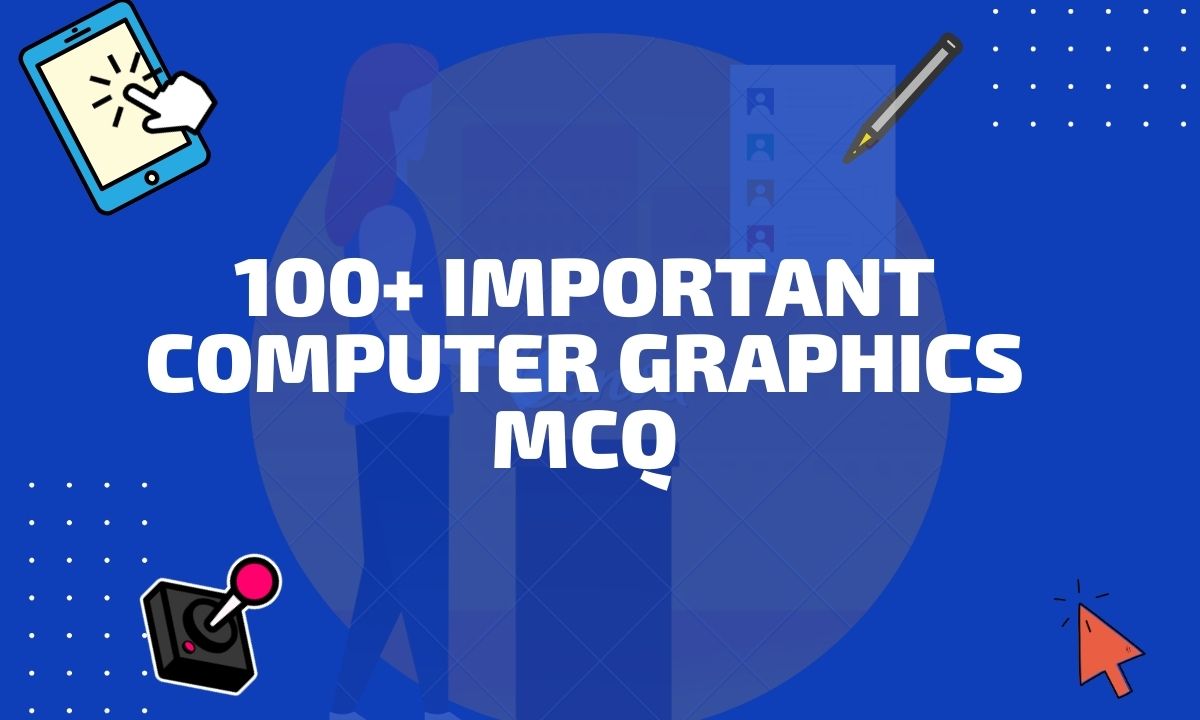Computer graphics have become an integral part of our daily lives, with applications ranging from entertainment and art to science and business. These digital images, which are created and edited using specialized software, offer a number of advantages over traditional graphic design methods. Some of the key benefits of computer graphics include the ability to create high-quality visuals quickly and accurately, the versatility to produce a wide range of different types of graphics, and the accessibility to a wider range of users regardless of location or technical expertise.
In addition, computer graphics can be more cost-effective and efficient for large projects or those that require frequent updates. Overall, the use of computer graphics allows for greater creativity and flexibility in the creation of visual content.

Advantages of Computer Graphics
1. Speed
One of the major advantages of computer graphics is the speed at which they can be created and manipulated. This allows designers and artists to quickly prototype ideas and make changes and updates to their graphics. For example, if a designer is working on a logo for a client and the client requests a change to the font, the designer can make the change quickly and easily using computer graphics software, rather than having to redraw the entire logo by hand. This not only saves time, but it also allows for more design iterations and a greater level of flexibility in the design process.
2. Accuracy
Computer graphics also allow for a high degree of accuracy, both in terms of the placement of graphical elements and in terms of the colors and shapes that are used. This is especially useful in fields such as engineering and architecture, where precise measurements and representations are critical. For example, an architect can use computer graphics to create a 3D model of a building, ensuring that all dimensions and angles are accurate. This can save time and resources by allowing the architect to identify and correct any errors before the building is actually constructed.
3. Control
With computer graphics, the user has a high degree of control over the final product. This allows for the creation of highly customized graphics that can be tailored to the specific needs and preferences of the user. For example, a graphic designer might use computer graphics to create a logo for a client. With the wide range of customization options available in most graphics software, the designer can create a logo that is exactly what the client is looking for, rather than being limited by the constraints of traditional design methods.
4. Versatility
Computer graphics can be used to create a wide variety of different types of images, including still images, animations, and interactive graphics. This versatility makes it a useful tool for a wide range of applications. For example, a graphic designer might use computer graphics to create a static image for a brochure, an animation for a website, or an interactive graphic for a presentation. The ability to easily create and switch between different types of graphics makes computer graphics a versatile tool for many different projects.
5. Consistency
Another advantage of computer graphics is that they can be created and edited with a high degree of consistency. This is especially useful in cases where multiple images or graphics need to be created to match a specific style or brand guidelines. For example, if a company has a specific color palette and font that they use in all of their marketing materials, a designer can use computer graphics to ensure that all graphics created for the company adhere to these guidelines. This helps to maintain a cohesive brand identity and ensure that all materials produced by the company have a consistent look and feel.
Read Similar: Image Processing In Computer Graphics
6. Efficiency
Because computer graphics can be created and edited quickly and accurately, they can be a more efficient means of creating visual content than traditional methods. This is especially true for large projects or for those that require frequent updates. For example, if a company is producing a product catalog with hundreds of different products, it might be more efficient to use computer graphics to create and edit the product images rather than taking and editing photographs of each product individually.
7. Collaboration
Computer graphics software often includes features that allow for collaboration and teamwork. This can be useful for projects that involve multiple people or for those that require input from different departments or stakeholders. For example, if a designer is working on a marketing campaign with a team of writers and marketing strategists, they can use collaborative features in their graphics software to share and review drafts of the campaign materials. This helps to ensure that all team members are on the same page and can contribute their ideas and feedback in real-time.
8. Accessibility
With the proliferation of computers and the internet, computer graphics are now more accessible than ever before. This allows for a wide range of users to create and edit graphics, regardless of their location or technical expertise. For example, an artist living in a remote rural area might use computer graphics software to create and sell their artwork online, reaching a global audience. Similarly, a small business owner might use computer graphics to create their own marketing materials, rather than having to hire a professional designer. The accessibility of computer graphics allows for greater creativity and self-sufficiency for individuals and businesses.
Do you know: Logical Input Devices In Computer Graphics
9. Cost-effectiveness
While some computer graphics software can be expensive, the overall cost of creating and editing graphics using a computer is often lower than the cost of traditional methods. This is especially true for large-scale projects or for those that require frequent updates. For example, if a company is producing a large print ad campaign that requires multiple images to be created and updated on a regular basis, it might be more cost-effective to use computer graphics rather than hiring a team of photographers and graphic designers to create the images by hand.
10. Quality
Finally, computer graphics can be of a very high quality, with smooth lines, precise colors, and high resolution. This makes them suitable for a wide range of applications, from simple marketing materials to complex scientific visualizations. For example, a scientist might use computer graphics to create detailed 3D models of molecular structures, allowing for a more accurate and comprehensive understanding of the molecules and their functions. Similarly, a marketing agency might use high-quality computer graphics to create beautiful and engaging visuals for a print ad campaign, helping to effectively communicate the message to the target audience. Overall, the use of computer graphics allows for the creation of professional-grade graphics that can be used in a variety of applications.
Similar: Computer Graphics Input Devices
Conclusions
In conclusion, computer graphics offer a number of advantages over traditional graphic design methods. From the speed and accuracy of creation to the versatility and accessibility of the software, computer graphics provide a powerful tool for artists, designers, and professionals in a variety of fields. Whether you are creating marketing materials for a business, designing a website, or creating scientific visualizations, the use of computer graphics can greatly enhance the quality and efficiency of your work. With the wide range of software available and the constant evolution of technology, the possibilities for creating and manipulating digital graphics are nearly endless.



